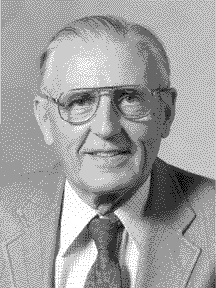 1922-2002
1922-2002
Jim Meyer was raised on a livestock- and grain-producing ranch in northern Idaho. His undergraduate studies at the University of Idaho were interrupted by three years (1943-46) in the Marine Corps, including service in the Pacific. He returned to complete his BS in Agriculture in 1947 and went on to complete MS (1949) and PhD (1951) degrees in Animal Nutrition at the University of Wisconsin.
In 1951 he joined the faculty of the Department of Animal Husbandry at UC Davis, rising to the rank of professor in 1962. His research focused on mineral nutrition, alfalfa utilization, compensatory growth, and evaluation of feeding value and feeding standards. He made important contributions to the development of the Net Energy system of feed evaluation, a major advance in animal nutrition. In 1961, Jim received the American Feed Manufacturers' Award for research in Animal Nutrition from the American Society of Animal Science. He served 3 years as department chairman before becoming dean of the College of Agriculture in 1963. As dean, he led the college to change its name to the College of Agricultural and Environmental Sciences to emphasize the relationships of agriculture and the environment and the importance of environmental quality. As dean he organized a thorough overhaul of the undergraduate curriculum, one result of which was doubling of enrollment during his 6-year tenure. He became Chancellor at the height of the period of student protest of the Vietnam War. His steady and non-confrontational handling of those protests at Davis was credited with preventing a very volatile situation from getting out of hand.
Throughout his 18 years at the campus' top post, Jim Meyer demonstrated the courage to hold to his convictions, an understanding of his constituency's diverse needs, and a belief that all facets of the campus community should be involved in the decision-making process. Eleven major teaching and research facilities were constructed under his leadership. The Graduate School of Management was created, students increased in numbers and in diversity, the work-learn program was begun, as were the General Education Program and Peer Advising. He was dedicated to ensuring that students receive a broad education to prepare them not only for a career, but also for life.
After stepping down as Chancellor, Jim returned to the Animal Science Department and to an office in Meyer Hall, the Agriculture building named after him. He came in to work almost every day, helped establish the Animal Science Development Board, led the Students First fund-raising campaign, researched, wrote, and spoke on the changing role of the Land Grant University in modern society, and was available to talk to anyone who dropped by.
